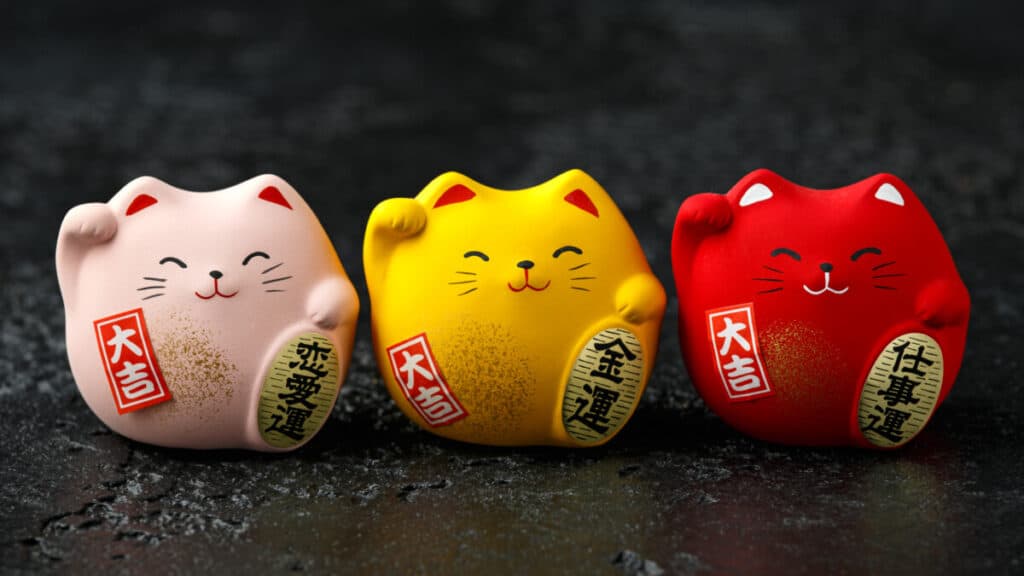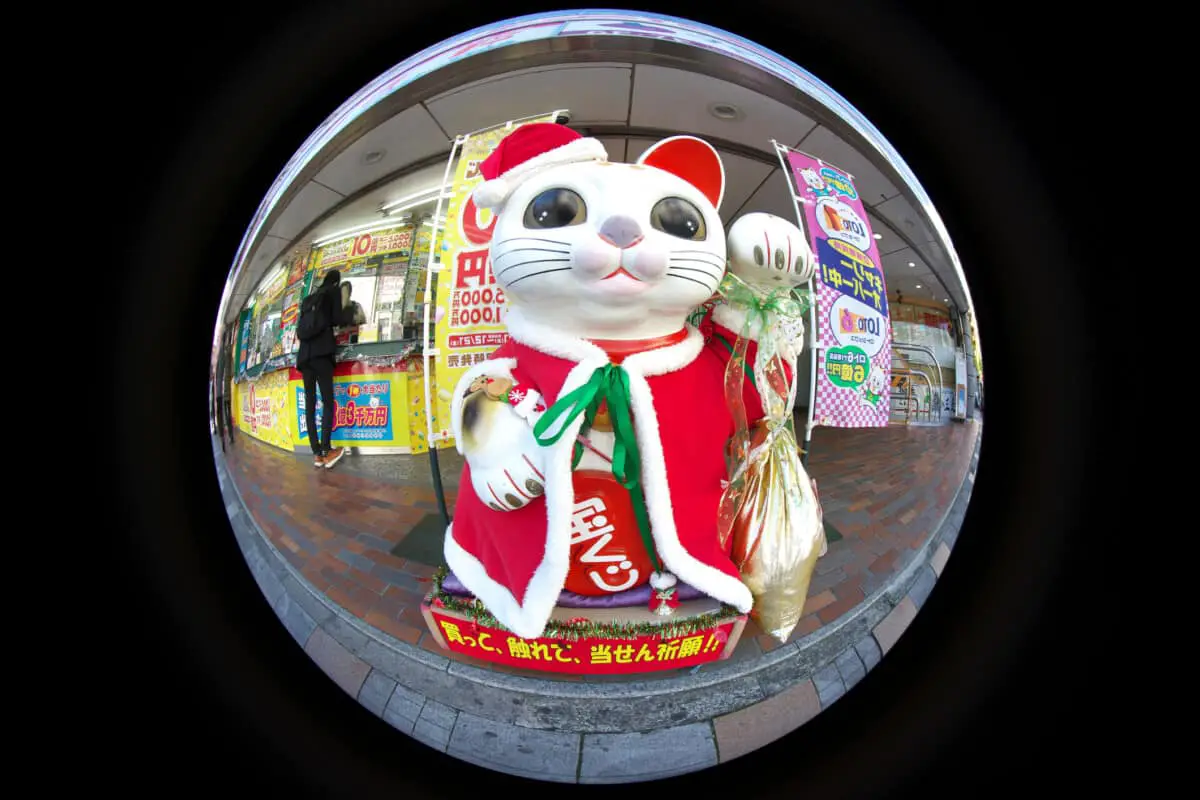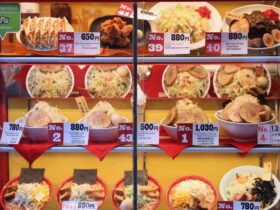You’ve definitely seen these ‘waving’ Japanese cats before, but you may not know their story. We’re talking, of course, about Maneki Neko figures, and it just so happens that they have a rich history and more significance than you might think.
Today we’ll tell you a little about their history and give you a taste of the symbolism behind these friendly felines.
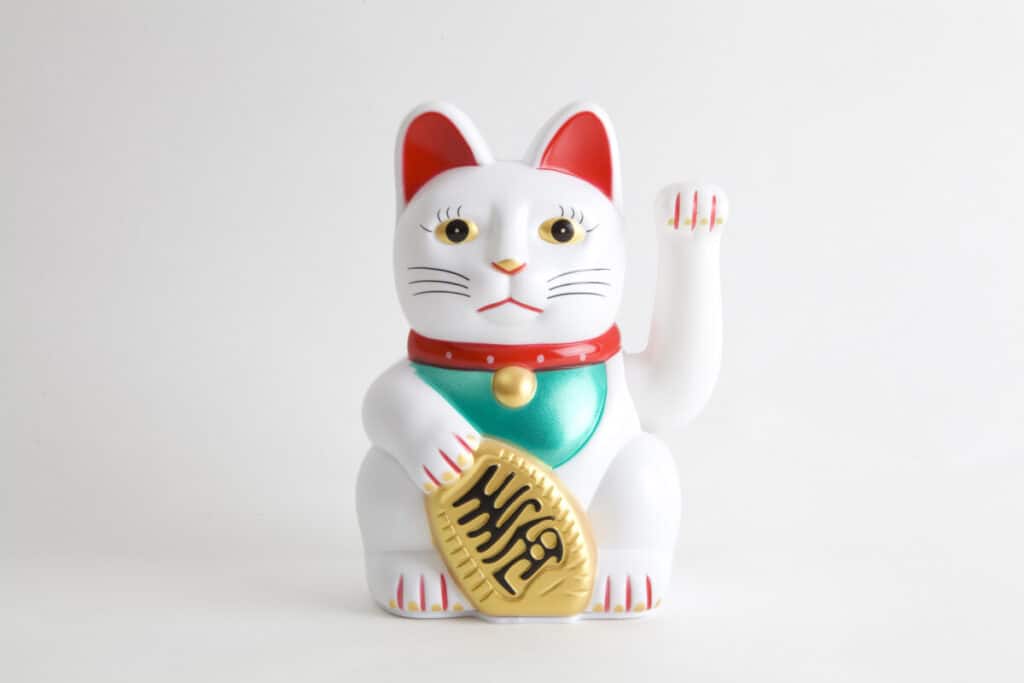
The Maneki-Neko is a popular Japanese figurine that is said to bring good fortune to its owner. They are generally constructed of ceramic. The figurine depicts a cat with one paw elevated, typically a calico Japanese Bobtail. The figurines are frequently exhibited near the entrances of shops and businesses.
Some Maneki-Neko comes with a mechanical paw that moves back and forth slowly. There is definitely much more going on than what first meets the eye.
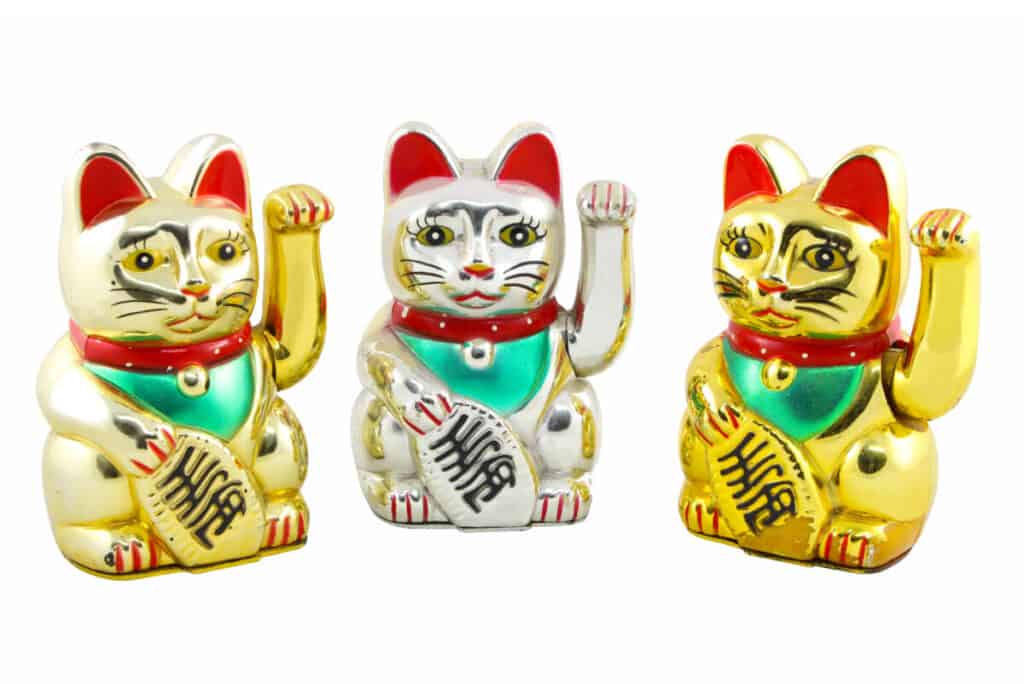
Maneki Neko are mysterious
All cats are mysterious, and Maneki Neko is no exception. It starts off with their origins. While you’ve seen these cats around the world, waving at you from restaurants and shops, they’ve also pervaded pop culture to the point that we don’t blink an eye if we see one in a video game or a movie.
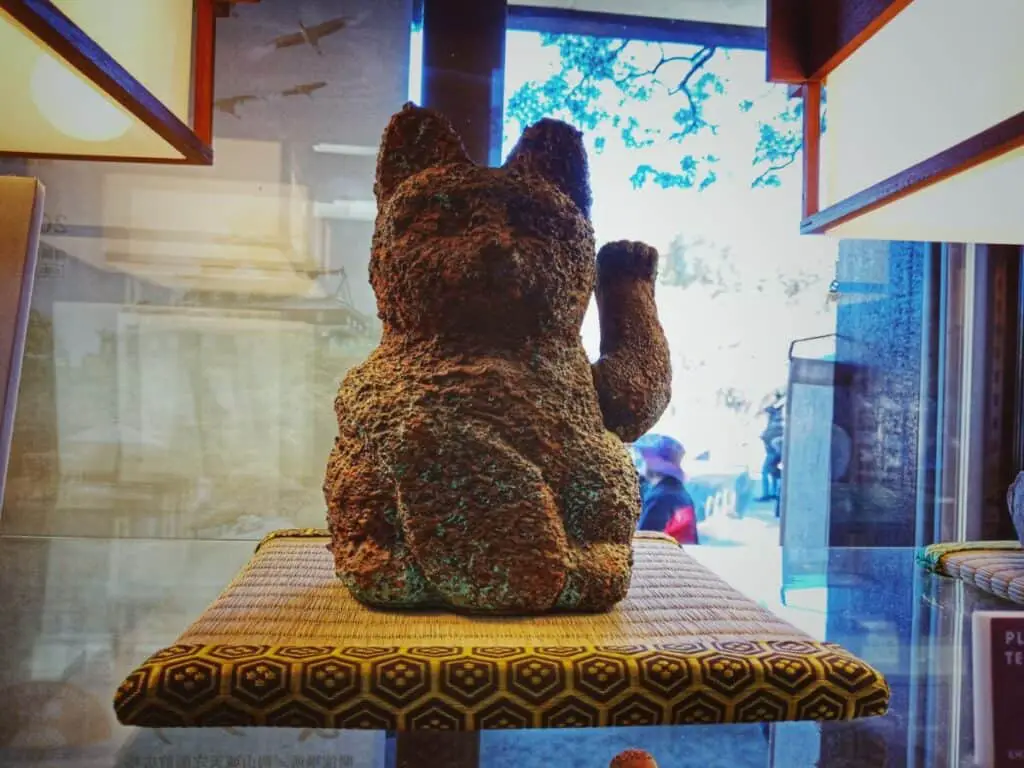
Despite their popularity, we aren’t certain exactly how old, although it is believed that they first started popping up during the Edo period of Japan – from 1603 to 1868! There is also some contention as to where exactly in Japan these cats were created, though it is likely to be either Osaka or Tokyo.
While you might be thinking that it wouldn’t be so uncommon for someone to make cats into statues, you’d certainly be right there, but you’ve got to remember where they come from. Maneki-Neko is thought to have originated in Tokyo, however, some argue that it had been Kyoto.
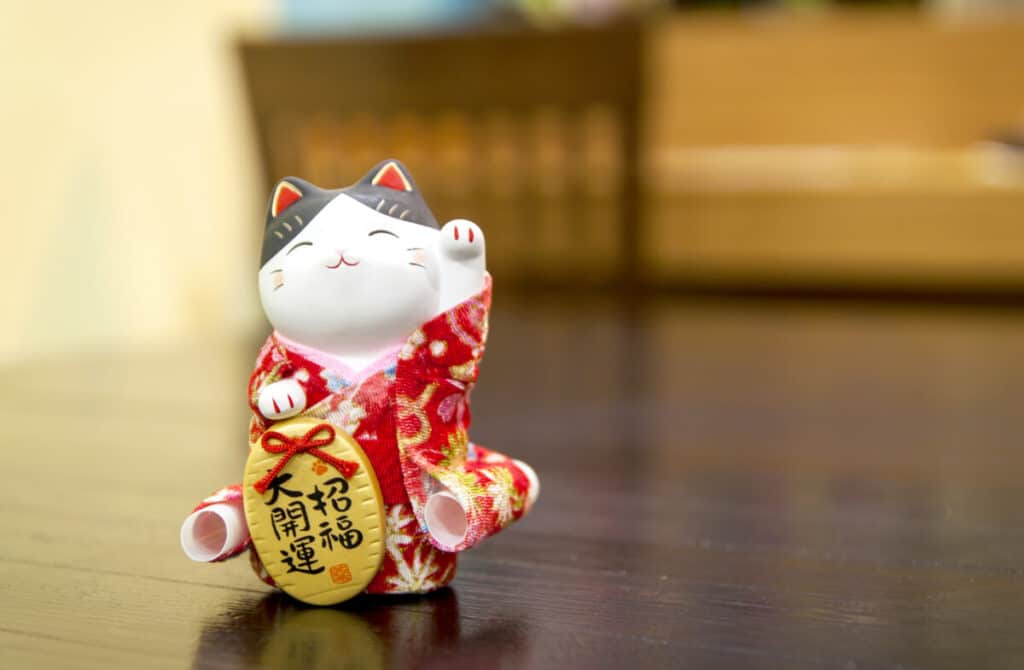
Japan is a very old culture and one that is deeply steeped in symbolism, so Maneki Neko is naturally quite rich with symbolic meaning themselves. You might not know it, but these fortune-luck-cats can be as individual as the ones that we keep as pets. Let’s take a look at the symbolism and you can see for yourself.
Symbolism of the raised paw
Aside from the friendly feline face and shape, you always notice that outstretched or waving paw. This is where the first bit of symbolism is hiding and it can start with how high that paw is raised.
The higher the paw, the more luck the cat is said to bring its owner.
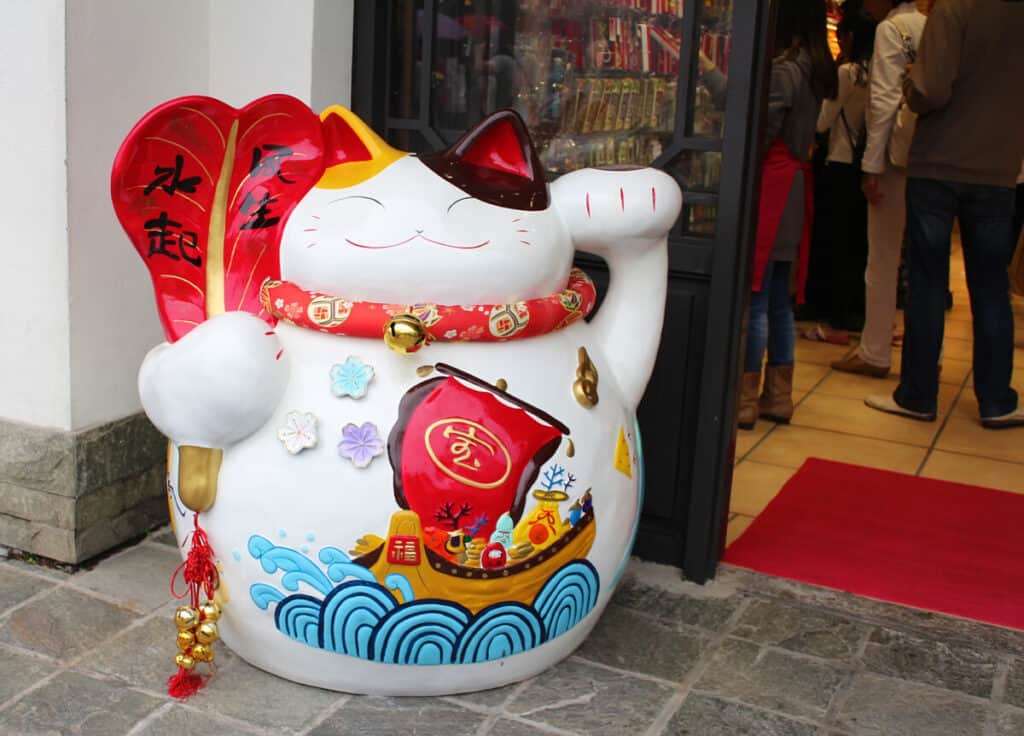
It’s not just the height, however, as you also need to pay attention to WHICH paw the cat is holding up. The left paw means that the cat is waving for success in business, while the right is meant to bring good fortune and increase your luck overall.
Lucky cats are color coded
The color of the Maneki Neko is important as well, so if you’d like to pick one for yourself then you will want to choose carefully. While they come in many colors, here is a lucky-7 sampling with a little information on their significance:
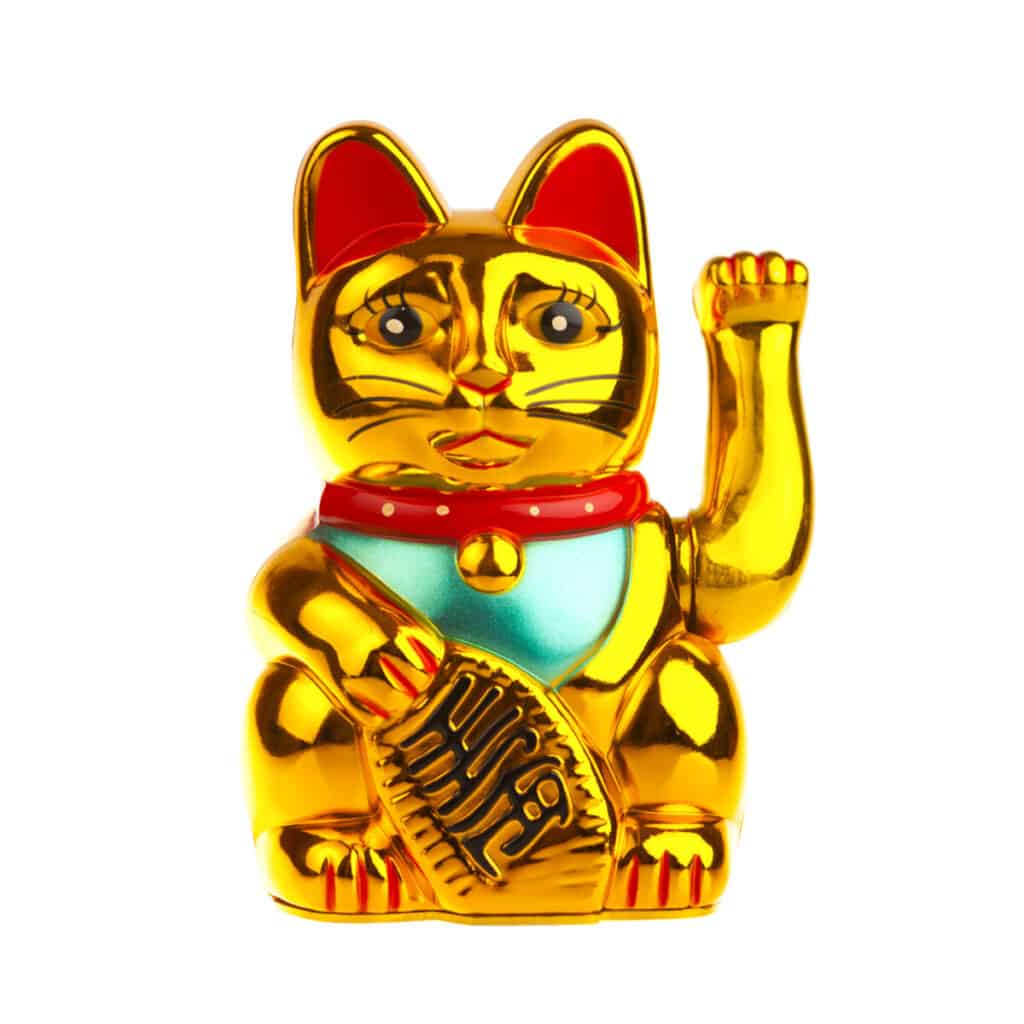
- Black – Despite European superstition, in Japanese culture black cats are protection against bad luck and evil influence.
- Blue – Blue kitties are all about success and the wisdom to obtain it.
- Gold – Gold seems to keep its significance through many cultures, and it’s the same for Japan. This color signifies wealth and the good life.
- Pink – Pink kitties help to attract romance and love.
- Red – The more serious form of pink, red is more about love and marriage, but it can also be for relationships in general.
- White – White Maneki Neko are considered to represent purity and a positive outlook on life.
- Yellow – Yellow kitties are good for healthy mind, body, and relationships. They have a stabilizing effect on life.
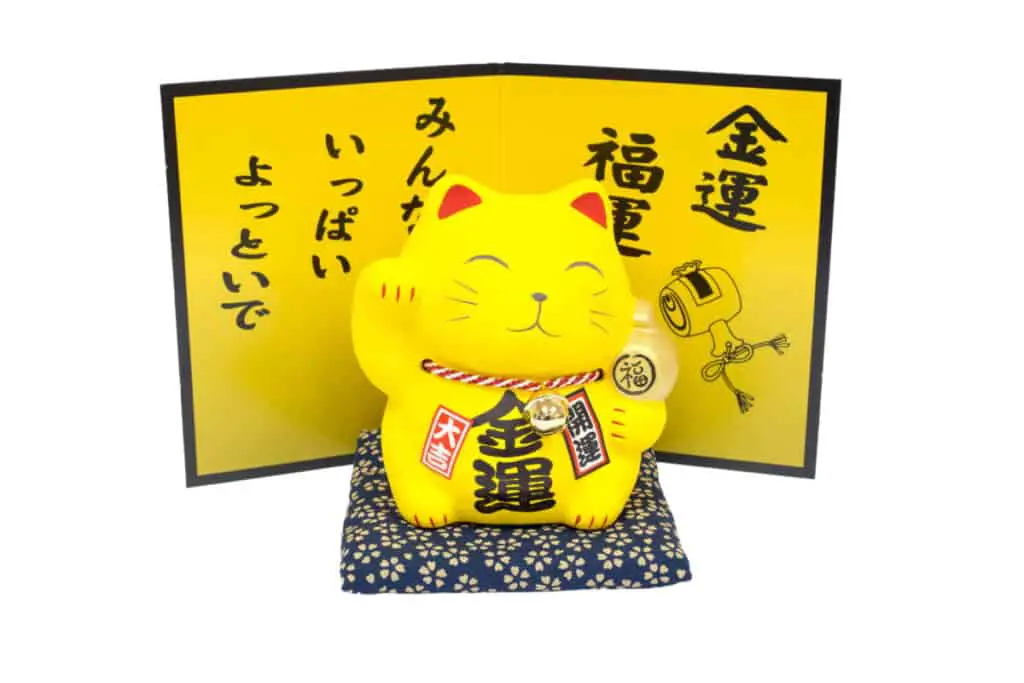
Each Neko may have specific accesories and meanings
Cats love their toys, and Maneki Neko is certainly no exception to this rule. You’ll notice first the collar or necklace around the neck and what you are seeing is essentially an Edo (Tokyo) style cat collar.
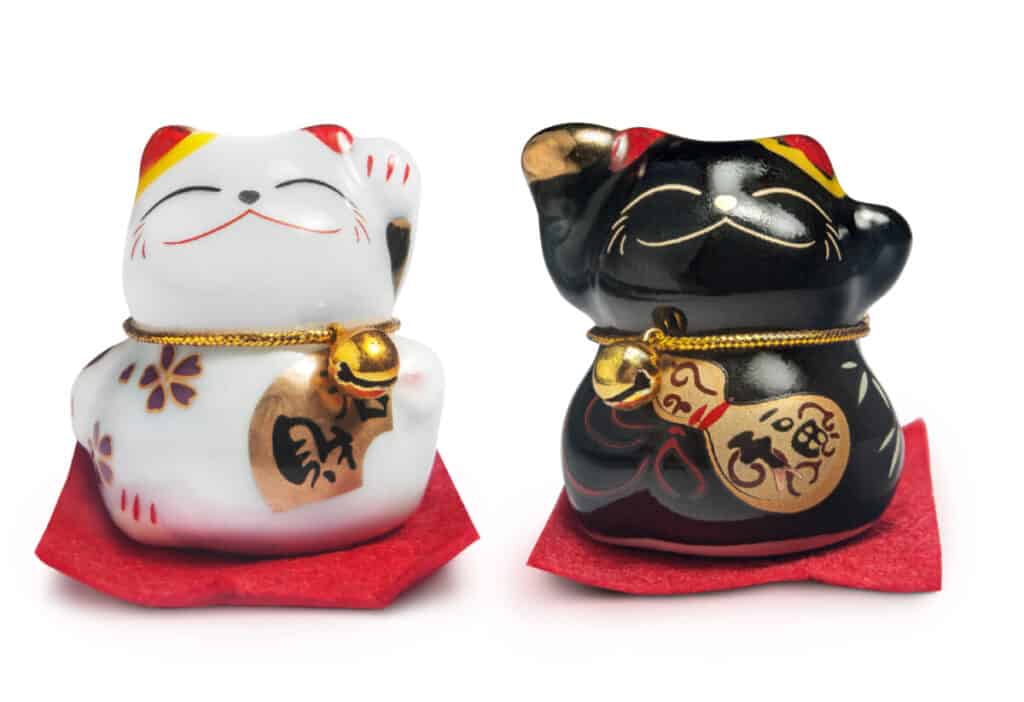
Sometimes they’ll have a bell or even an inscribed adornment beneath, but you’ll also see an assortment of other accessories if you stop and take a look. Here are some common examples:
- Coins – Another indicator of Edo origins, the most common coins in a Maneki Neko’s hands are koban coins. Just one of these was worth $1000 of today’s dollars, but Maneki Nekos sometimes have numbers engraved on them in the millions, for those who want to attract super-wealth. Some cats skip the coin and simply have a money bag!
- Drums – The drum is supposed to ‘drum up business’ and fill the store with paying customers.
- Koi – Kitties love fishies, but your Maneki Neko is keeping this fish for your own wealth and prosperity.
- Gourds – Hollowed-out gourds were used for drinking and are also associated Fukurokuju, a Japanese god of wisdom and long-life. The gourd is meant to bring you good luck and to keep evil at bay.
- Stones – Sometimes it looks like your cat has a marble or a gemstone in their paw, and aside from any symbolism behind the choice of the gem itself, this is believed to represent wealth and the wisdom of years.
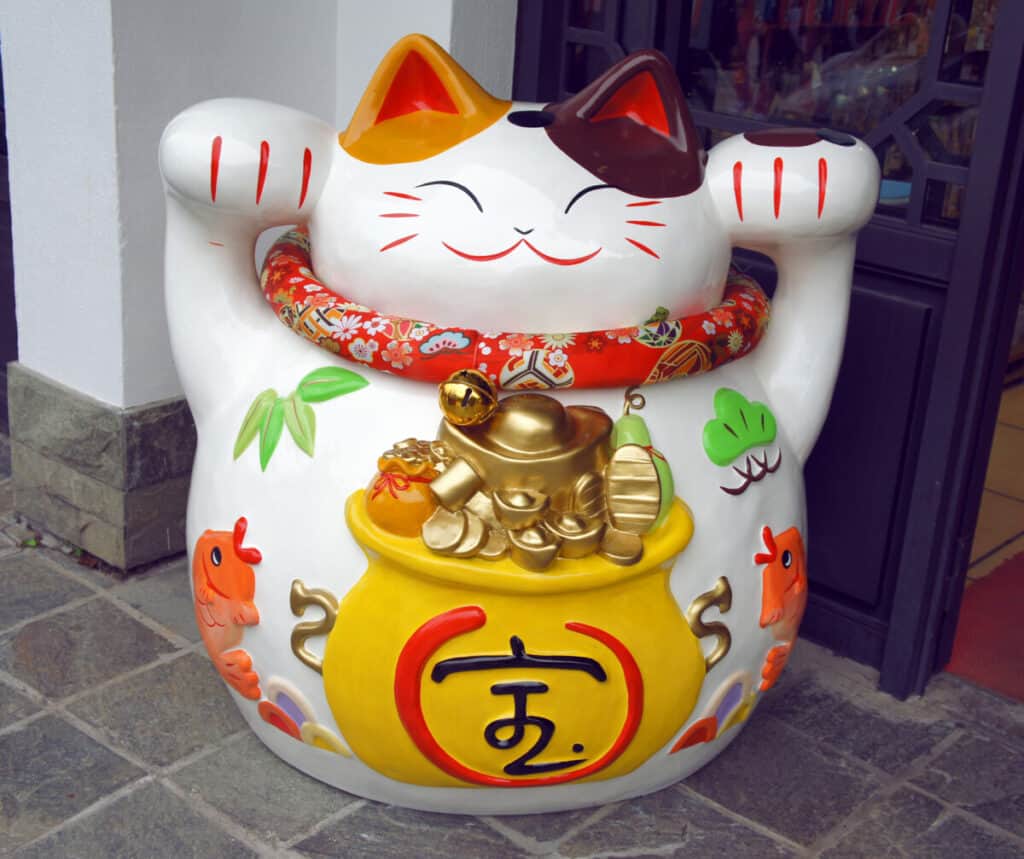
How serious are Maneki Neko taken? Some are made of gold!
So, are these adorable, pop-culture icons really taken seriously or are they simply too cute to resist? Well… if their popularity doesn’t convince you, then you should consider the materials behind them and some of the places that you can find them.
You’ll find Maneki Neko that are made of ceramics, plastics, and woods, but sometimes they are even carved out of jade or made with actual gold! Also, despite that you most commonly see them in the marketplace or in restaurants when you come in for a meal, these lucky little Neko are also quite commonly found in sacred shrines.
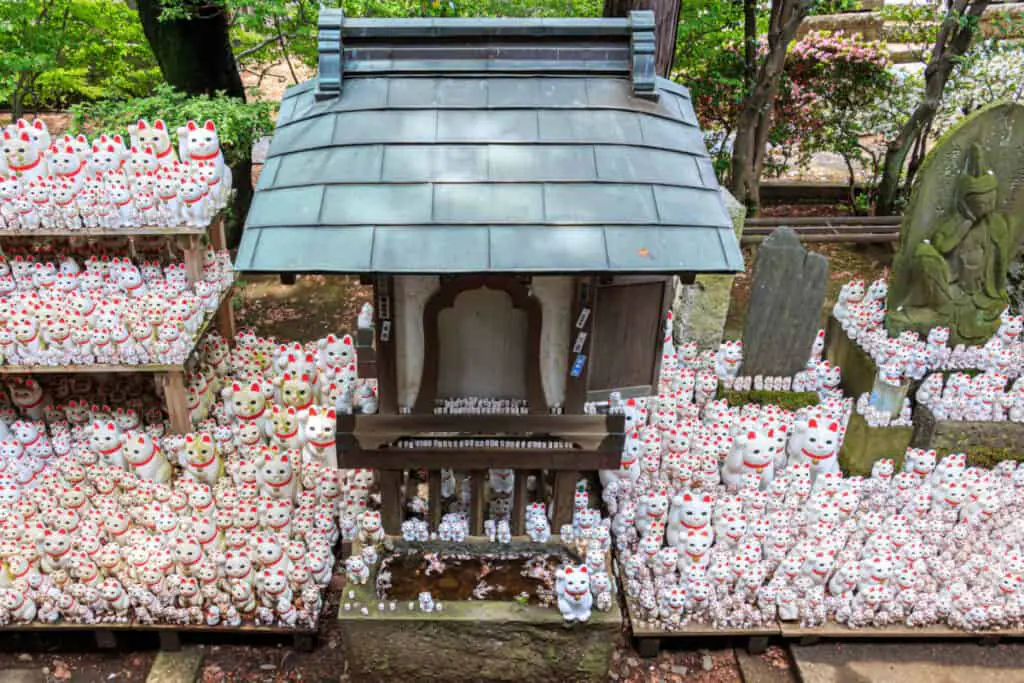
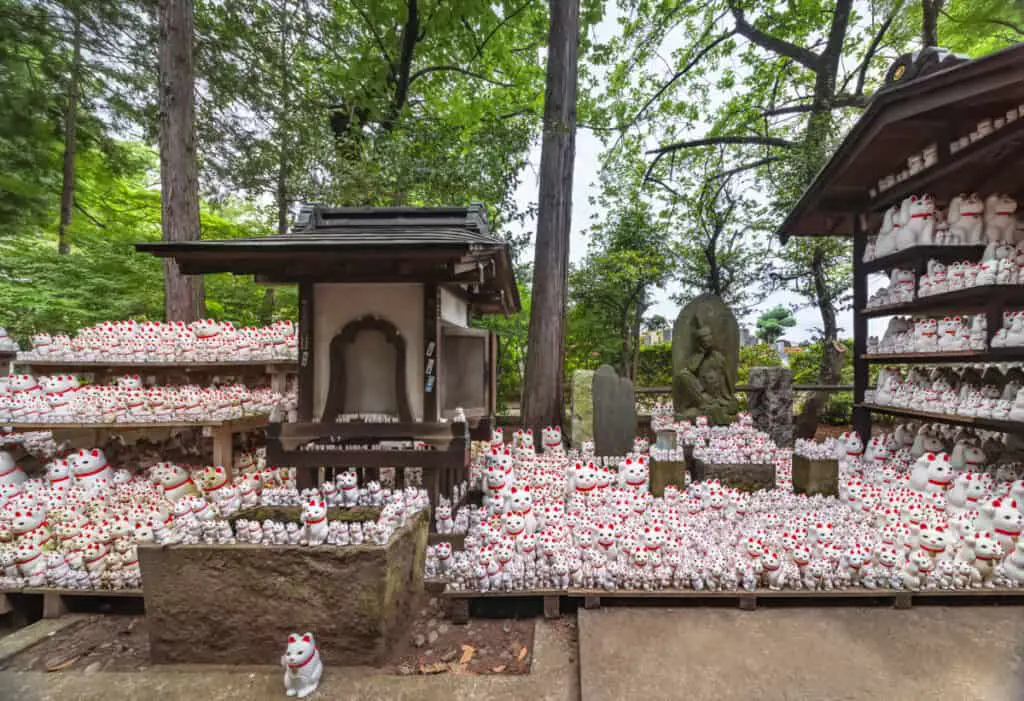
Gotokuji Temple, in Tokyo’s Setagaya district, is a Buddhist temple where the Maneki-Neko, or “good fortune cat figurine,” is believed to have originated. Cat enthusiasts all around the world have gravitated to these figurines depicting a cat beckoning with its front paw.
Now you know more about Maneki Neko
As you can see, those waving and friendly Maneki Neko have a lot more depth to them than meets the eye. So, the next time that you see one in a marketplace and consider taking one home, just be sure to take a closer look and choose your own cat with informed intent.
Check the paws to see which are raised. Carefully consider the color of the cat and what you’d like it to bring to you. Finally, check to see what ‘accessories the cat has included with it… or just skip it all and pick a cute one.
Whatever you choose, these good fortune figurines of Japan are sure to bring you a smile and who knows? Maybe a little good luck to go with it.
